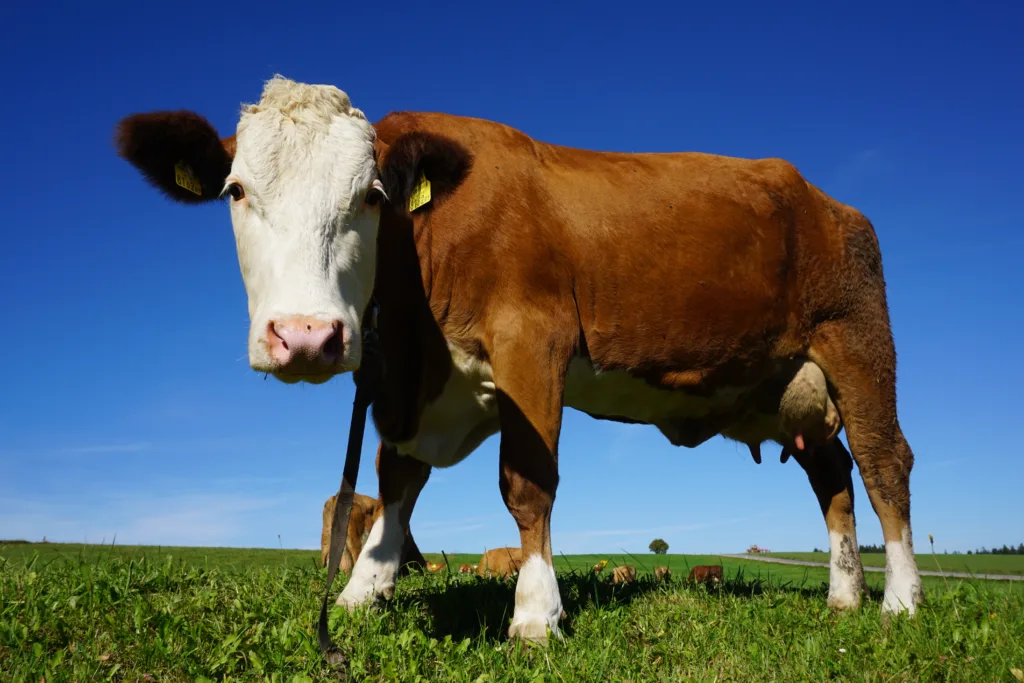Do you suffer from digestive issues such as IBS, constipation, diarrhea, and bloating? Many people who experience these symptoms find that the low FODMAP diet helps to improve their digestion and reduce the pain associated with it. But what exactly is a low FODMAP diet and is dairy low FODMAP? In this article, we will answer these questions and provide an in-depth look at why you might want to consider cutting down on dairy when following a low FODMAP diet.
FODMAP stands for Fermentable Oligosaccharides, Disaccharides, Monosaccharides and Polyols. It is a group of short-chain carbohydrates that can be poorly absorbed in the small intestine and cause digestive symptoms such as gas, bloating, abdominal pain and diarrhea. Following a low FODMAP diet may help improve these symptoms.
Low FODMAP Foods
Low FODMAP foods are foods that do not contain certain types of carbohydrates, known as fermentable oligo-, di-, and monosaccharides and polyols (FODMAPs). These carbohydrates are found in some grains, fruits, vegetables, dairy products, beans and legumes. Eating a diet low in FODMAPs can help to reduce symptoms of irritable bowel syndrome (IBS) such as bloating, gas and abdominal pain.
Examples of low FODMAP foods include lean proteins such as chicken, turkey and fish; gluten free grains such as quinoa, buckwheat and rice; non-starchy vegetables such as lettuce, carrot and zucchini; low-lactose dairy products such as hard cheese and lactose-free milk; nuts and seeds; fruits like banana, blueberry and grapefruit; condiments like olive oil and vinegar; herbs and spices; coffee substitutes such as chicory root coffee.
On the other hand high FODMAP foods include wheat-based products like breads and pastas; high-lactose dairy products like ice cream or yogurt; dried fruits like apricots or dates; legumes like chickpeas or lentils; fruit juices high in fructose like apple juice or pear juice.
It is recommended to avoid all high FODMAP foods during the elimination phase of the Low FODMAP Diet. After a few weeks on this diet you can start to reintroduce some high FODMAP foods one at a time to determine which ones trigger your symptoms. This is known as the ‘challenge’ phase of the Low FODMAP Diet.
What is a Low FODMAP Diet?
A low FODMAP diet is an eating plan designed to help ease symptoms of irritable bowel syndrome (IBS). It involves avoiding certain carbohydrates called FODMAPs, which are found in a variety of foods. These carbohydrates are not absorbed well by the small intestine, and can cause symptoms such as abdominal pain, bloating, gas, and diarrhea. A low FODMAP diet can help reduce these symptoms and improve digestion.
Why Follow a Low FODMAP Diet?
Following a low FODMAP diet can be beneficial for people with IBS or other digestive issues. It helps reduce symptoms such as abdominal pain, bloating, gas, and diarrhea. It may also help to improve overall digestion and gut health.
How to Follow a Low FODMAP Diet
To follow a low FODMAP diet, you should eliminate high-FODMAP foods from your diet for several weeks or months. This means avoiding foods such as wheat products, dairy products, onions, garlic, apples, pears, peaches, and certain legumes. You should also limit or avoid foods that have added fructose or sugar alcohols such as sorbitol and mannitol.
Click here to preview your posts with PRO themes ››
It is important to note that not all carbohydrates are considered high-FODMAP. There are many low-FODMAP foods that you can eat on the diet including lean proteins like chicken and fish; non-dairy milks like almond milk; fruits such as bananas and oranges; vegetables like carrots and spinach; grains like quinoa; nuts and seeds; and healthy fats such as olive oil and avocado.
It is also important to pay attention to portion sizes when following a low FODMAP diet to ensure you do not overconsume high-FODMAP foods. It is recommended to work with a registered dietitian who understands the low FODMAP approach in order to create an individualized meal plan that fits your needs and lifestyle.
What Dairy Products Can be Consumed on a Low FODMAP Diet?
Those following a low FODMAP diet may consume certain dairy products. This includes lactose-free milk, such as almond, coconut, oat, and rice milk. Lactose-free products like yogurt and cheese can also be consumed in moderation. It is important to check the labels of these products to ensure they are low in FODMAPs. Additionally, butter and cream are usually allowed in limited amounts on a low FODMAP diet. For those who are lactose intolerant, lactose-free dairy products that have been fortified with calcium may be consumed. However, other high FODMAP dairy products such as cow’s milk, ice cream and processed cheese should be avoided.
It is important to remember that all dietary restrictions should be discussed with a health care professional before making any changes to your diet.
Lactose free dairy products
Lactose free dairy products are a great alternative for those who are lactose intolerant or have difficulty digesting lactose. They provide the same nutritional benefits as regular dairy products, with the added bonus of being easier to digest. These products come in many forms, such as milk, yogurt, cheese and ice cream. Lactose-free milk is made by adding an enzyme called lactase to regular milk, which breaks down the lactose, making it easy to digest. Lactose-free cheese is made in a similar way, with the addition of a different enzyme that breaks down the lactose. Lactose-free yogurt is also available, and it is made with a combination of cultures and enzymes that break down the lactose. Finally, there are many brands of lactose-free ice cream available as well.
These products can be found at most grocery stores and health food stores. Many brands offer organic and non-dairy options as well. It is important to read labels carefully when purchasing these products to make sure they are actually lactose free. In addition to being easier to digest than regular dairy products, they can also be beneficial for those who suffer from allergies or other digestive issues.
Overall, lactose free dairy products are a great option for those who cannot tolerate or do not enjoy regular dairy options due to their intolerance or digestive issues. They provide all of the same nutritional benefits with an added bonus of being easier on your system. Be sure to read labels carefully when purchasing these items and always consult with your doctor if you have any questions or concerns about their use.

Dairy Alternatives on a Low FODMAP Diet
For those following a Low FODMAP diet, finding dairy alternatives can be challenging. But with some research, you can easily find suitable replacements for milk and other dairy products.
Click here to preview your posts with PRO themes ››
There are many delicious dairy alternatives available on the market. Soy and almond milks are the most popular options, but there are also rice, oat, coconut and hemp milks available. These can be used in place of dairy milk in most recipes, as well as for drinking or pouring over cereal.
Cheese is another important dairy item that can be difficult to replace on a low FODMAP diet. Fortunately, there are several vegan cheese options made from nuts or plant-based proteins that provide a delicious alternative to traditional cheeses. These cheeses can be used in recipes or enjoyed as part of a snack or meal.
Yogurt is another common dairy food that has many delicious vegan alternatives available. Coconut yogurt is one of the most popular options and comes in a variety of flavors and textures. It is also an excellent source of healthy fats and probiotics, making it a great addition to any low FODMAP diet.
When it comes to butter, ghee is an excellent choice for those following a low FODMAP diet. Ghee is clarified butter that has had all the lactose removed, making it easy to digest and suitable for those with lactose intolerance or sensitivity. It has all the flavor of butter without any of the digestive issues associated with dairy products.
Finding suitable alternatives to dairy products on a Low FODMAP diet doesn’t have to be difficult or time consuming. With some research and experimentation, you can easily find delicious substitutes that will fit your dietary needs.
How Much Dairy Can be Consumed on a Low FODMAP Diet?
It can be confusing to understand how much dairy can be consumed on a low FODMAP diet. Dairy products contain lactose, which is a type of sugar that can aggravate digestive symptoms in some people. While dairy is often restricted on a low FODMAP diet, there are still some ways to enjoy it without triggering symptoms.
Most types of dairy contain lactose and should therefore be avoided when following the diet. This includes milk, cream, ice cream, yogurt and cheese. Some types of cheese are naturally low in lactose, such as cheddar and parmesan, so these may be tolerated in small amounts. It’s important to note that hard cheeses also contain casein and whey proteins which can trigger digestive symptoms in some people.
Butter is usually well tolerated on a low FODMAP diet because it does not contain any lactose or casein proteins. However, it is still high in fat so it should be consumed in moderation. Lactose free milks are also available and these may be tolerated by some people who are sensitive to lactose. These milks are made from soy, rice or almond and they have the same nutritional benefits as regular milk but with significantly less lactose content.
In general, it’s best to limit your consumption of dairy when following a low FODMAP diet but if you do choose to include some dairy products then opt for those that are naturally lower in lactose such as cheddar cheese or lactose free milks.
It’s also important to experiment with different foods and listen to your body to determine what works for you personally. Every person responds differently when it comes to food sensitivities so try not to get too caught up in the rules!
Click here to preview your posts with PRO themes ››
Dairy Intolerance and IBS Symptoms
Dairy intolerance is a condition in which individuals experience adverse reactions, such as abdominal pain and bloating, when consuming dairy products. Symptoms of dairy intolerance can be similar to symptoms of irritable bowel syndrome (IBS). Both conditions can cause abdominal pain and other digestive issues. It is important to understand the differences between the two conditions in order to properly manage symptoms.
The most common symptom of dairy intolerance is abdominal discomfort after consuming dairy products. This may include bloating, gas, cramps, diarrhea or constipation. Some people may also experience nausea or vomiting after consuming dairy products. In some cases, individuals may also experience skin irritation or hives after consuming dairy products.
IBS is a chronic condition that affects the large intestine (colon). It causes a variety of symptoms including abdominal pain and cramping, bloating, gas, diarrhea or constipation. Some people with IBS may also experience mucus in their stool. IBS can also cause fatigue, nausea and difficulty sleeping due to poor digestion of food.
Both dairy intolerance and IBS can have similar symptoms but there are some key differences between the two conditions. One way to differentiate between the two is by looking at how long it takes for symptoms to appear after eating milk or milk-containing products. With dairy intolerance, symptoms typically appear within minutes or hours whereas with IBS it may take days or weeks for symptoms to appear. Additionally, some people with IBS may not have any noticeable reaction when they consume milk or milk-containing products but may experience an increase in their typical IBS symptoms after eating other types of food such as wheat or gluten-containing foods.
It is important to talk to your doctor if you are experiencing any of these symptoms so they can help determine what is causing them and provide proper treatment options. Your doctor may recommend an elimination diet in order to determine if you are intolerant to any particular food groups such as dairy products. Eliminating certain foods from your diet for a period of time before reintroducing them one at a time can help identify which foods are contributing to your symptoms.
Additionally, there are several lifestyle changes that can help reduce both dairy intolerance and IBS symptoms including increasing fiber intake through whole grains and fruits/vegetables; limiting intake of processed foods; avoiding foods that contain artificial sweeteners; drinking plenty of water; exercising regularly; managing stress levels; getting enough sleep; and avoiding smoking/alcohol consumption if possible.
By understanding the differences between dairy intolerance and IBS as well as making lifestyle changes that promote digestive health, you can help reduce your risk for digestive discomfort associated with both conditions.

Conclusion
In conclusion, dairy is generally low FODMAP in small amounts. Lactose-free milk and yogurt are good options for those on the low FODMAP diet, as they contain minimal amounts of FODMAPs. Soy milk, coconut milk, and almond milk can be used as alternatives to traditional dairy milk for those who are lactose intolerant. However, it is important to note that lactose-free products may still contain other FODMAPs, so it is important to read labels carefully. Additionally, it is best to talk to a registered dietitian or qualified health professional before making any changes to your diet.
Overall, dairy can be a beneficial part of a balanced diet if consumed in moderation and monitored closely. Dairy can provide essential nutrients such as calcium and protein that are important for overall health and wellbeing. Therefore, if you are following a low FODMAP diet, speak with your doctor or registered dietitian about which types of dairy foods you should include in your diet.

